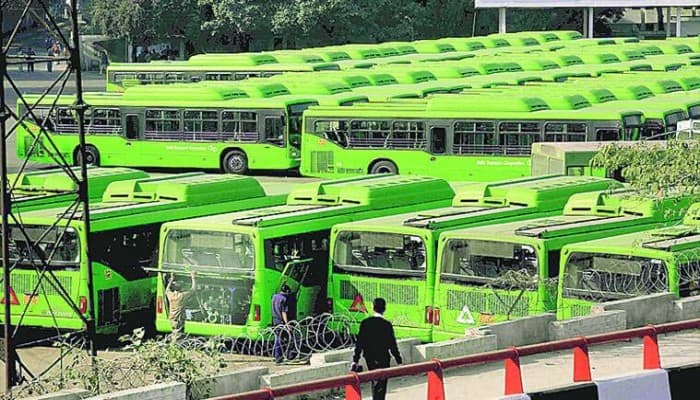Delhi is well connected with public transport like Buses, Auto Rickshaws, Taxi Service and recently the Delhi Metro Link. Cycle rickshaws are limited only to a specific colony or suburb catering to a passengers travelling only within a certain area. For most of the commuting needs, the Delhi Transport Corporation Buses caters to almost 55 % of the total population that run on CNG which is an eco-friendly initiative that was recently initiated and seriously executed in 1998 by the Government of Delhi under the strict order of the Supreme Court owing to the growing pollution rate of the city.
Most of the Buses originate and terminate at the Inter-State Bus Terminal or ISBT that take passengers who travel within Delhi or to and fro neighbouring States and various Bus Depots situated at certain areas administered by the government are available for better connectivity and accessibility of routes.
Delhi is also fringed by numerous Auto rickshaws that make for a more popular method of Transportation as they charge you with lower rates than what a taxi would charge. These rickshaws run on Compressed Natural Gas or CNG that do not pollute the atmosphere are is a lot cheaper than Petrol or Diesel. There are also numerous tourist taxis run by private companies that cater to many commuters who are either too busy or time constrained to wait for a Bus or look for an auto rickshaw and they constitute mostly of Business travellers and Tourists or people in emergency situations as many of these Taxi Services provide 24 x 7 home pick up and drop service to any corner of the city at a flat rate of Rs. 15/- per kilometre with air conditioning facility and Rs. 7.50/- per kilometre without air conditioning facility.
The one thing that has caught on to the craze and Transport Pulse of Delhi is the recent addition of the much awaited Delhi Metro Link operated by the Delhi Metro Rail Corporation or DMRC that offers passengers with a rapid transport system connecting various points of Delhi including Noida also known as the ‘Satellite City’ in Uttar Pradesh State. The Metro in interlinked via 78 Stations that run on three lines with a total length of 90 km criss-crossing across the city. Phase-I of Delhi Metro constitutes of the first Line or Line-1 connecting Shahdara Metro Station with Rithala Metro Station, Line-2 connecting Central Secretariat Metro Station with Jahangirpuri Metro Station and Line-3 connecting Noida City Centre Metro Station with Dwarka Sector 9 Metro Station. Phase-II will be completed by 2010, before the commence of the Commonwealth Games with a line measuring 128 km in length, Phase-III will be completed by 2015 and Phase-IV by 2020 that will connect over 414 km of Metro Link network termed larger than the London Underground Metro Link network.
Delhi is also well connected with the rest of India via numerous Railway Stations and forms the headquarters of the Northern Rail Network System with the New Delhi Railway Station, Old Delhi Railway Station, Nizzamuddin Railway Station and Sarai Rohilla Railway Station constituting of the main Railheads in the city.
Delhi has well maintained National Highways and Expressways that connect to other neighbouring states. There are a total of six Expressways out of which three are still under construction. The Delhi-Gurgaon-Delhi Expressway connects the city the International Airport and with Gurgaon and the DND expressway-cum-Flyover connects the city with Noida and Greater Noida that has made accessibility to the still awaited new Airport and the Indian Grand Prix track very easy. There are a total of five National Highways namely NH-1, NH-2, NH-8, NH-10 and NH-24 connecting the city to other states. The city roads are maintained by the Municipal Corporation of Delhi or MCD, Delhi Cantonment Board, NDMC, Public Works Department or PWD and the Delhi Development Authority or DDA in short.
The Indira Gandhi International Airport or DEL, the abbreviated form, connects Delhi with other States and International cities serving over 23 million domestic and International passengers that convert it into the busiest Airport in Southeast Asia. This Airport is currently being extended to cater to more passengers and their transport demands owing to the growing footfall in the City.
Delhi has always faced a growing demand in Transport needs due to the High traffic density coupled with increasing economic growth rate and population forcing the city to extend its Transport infrastructure. However, by 2020, this city should see some respite and hopefully can bring in more initiatives and innovations to improve the traffic and transport conditions of this city.
- Best Bookshops in Delhi - December 6, 2022
- Is Delhi metro free for ladies? - November 27, 2022
- Is Delhi Metro profitable? - November 27, 2022

